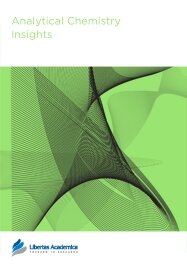

Publication Date: 21 Mar 2012
Type: Original Research
Journal: Analytical Chemistry Insights
Citation: Analytical Chemistry Insights 2012:7 1-12
doi: 10.4137/ACI.S8946

A methodology that utilizes 1H-NMR spectroscopy has been developed to simultaneously analyze toxic terpenes (thujone and camphor), major polyphenolic compounds, the total antioxidant capacity (ORAC) and the Folin-Ciocalteu (FC) index in foods and medicines containing sage. The quantitative determination of rosmarinic acid (limit of detection (LOD) = 10 mg/L) and total thujone (LOD = 0.35 mg/L) was possible using direct integration of the signals. For other parameters (derivatives of rosmarinic acid, carnosol and flavone glycosides, ORAC and FC index), chemometric regression models obtained separately for alcohol-based tinctures (R2 = 0.94–0.98) and aqueous tea infusions (R2 = 0.79–0.99) were suitable for screening analysis. The relative standard deviations for authentic samples were below 10%. The developed methodology was applied for the analysis of a wide variety of sage products (n = 108). The total thujone content in aqueous tea infusions was found to be in the range of not detectable (nd) to 37.5 mg/L (average 9.2 mg/L), while tinctures contained higher levels (range nd—409 mg/L, average 107 mg/L). The camphor content varied from 2.1 to 43.7 mg/L in aqueous infusions and from not detectable to 748 mg/L in tinctures (averages were 14.1 and 206 mg/L, respectively). Phenolic compounds were also detected in the majority of the investigated products. 1H-NMR spectroscopy was proven to have the ability to holistically control all important adverse and beneficial compounds in sage products in a single experiment, considerably saving time, resources and costs as NMR replaces four separate methodologies that were previously needed to analyze the same parameters.
PDF (1001.91 KB PDF FORMAT)
RIS citation (ENDNOTE, REFERENCE MANAGER, PROCITE, REFWORKS)
BibTex citation (BIBDESK, LATEX)
XML
PMC HTML


I have published more than thirty research papers in internationally reputed high impact factor journals including Libertas Academica publications, Proteomics Insights and Analytical Chemistry Insights. I have no hesitation in saying that Proteomics Insights is highly efficient for its rapid and high quality review process and keeping the authors informed at each stage of the publication process. I recommend this journal for students, teachers and research workers who wish to publish their work. ...
Facebook Google+ Twitter
Pinterest Tumblr YouTube